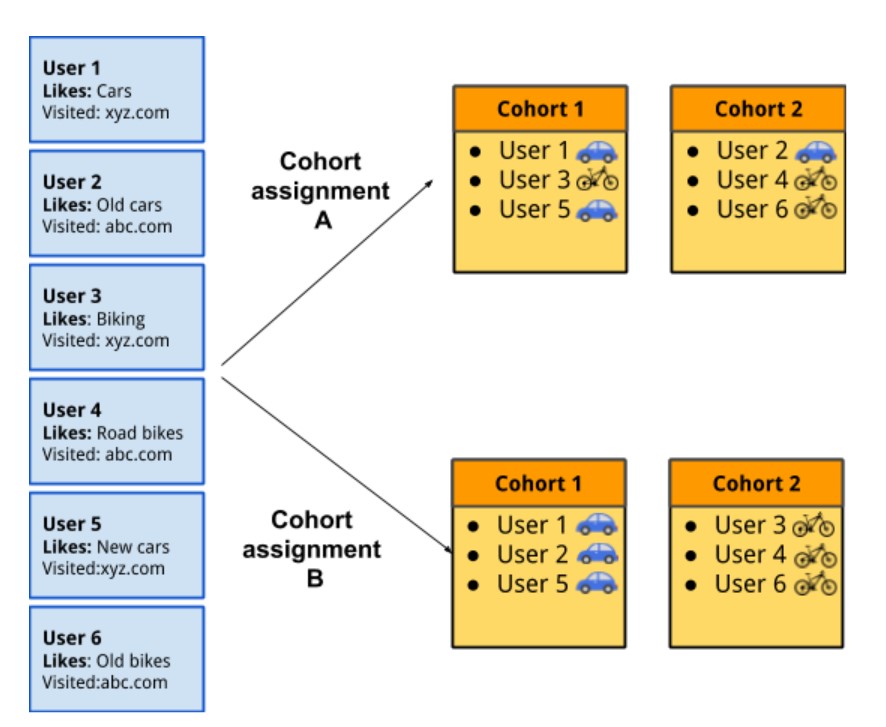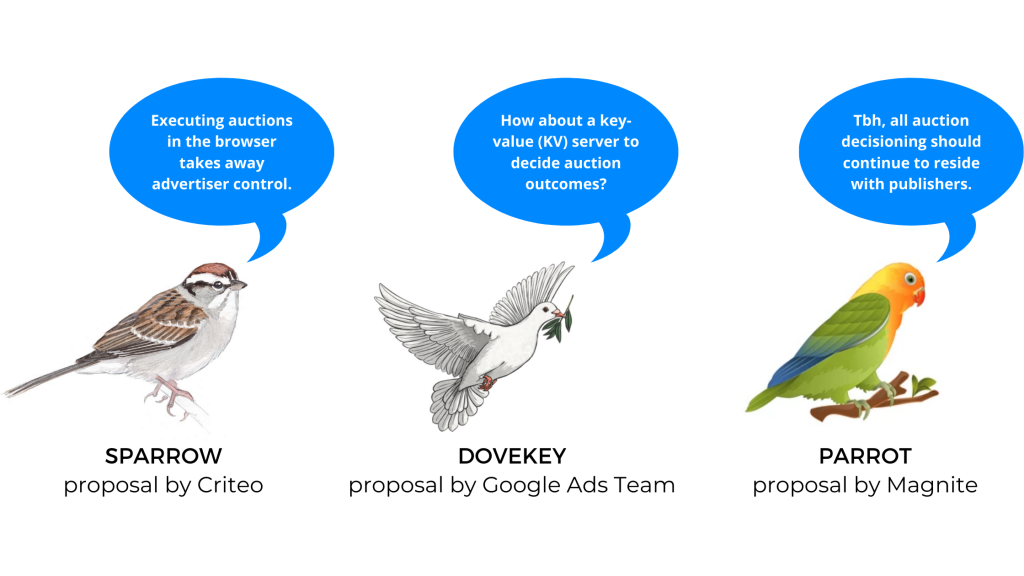The recent (March 4th 2021) announcement from Google now confirms that once Chrome blocks the use of third-party cookies, Google will not build alternate ways to track individuals as they browse across the web, nor will they use them in their ads products. Google has indicated that it will use a combination of consented first-party data, contextual data and anonymous audience cohorts, via Privacy Sandbox, for targeting and measurement of digital ads, and is working with industry to develop these use cases.
For a follow-up article on this topic written on March 12th please click here
What is the Privacy Sandbox?
Google’s Privacy Sandbox is a framework of proposals designed to enable marketers to measure the effectiveness of digital marketing without third-party cookies, cross-site tracking or fingerprinting.
What are Audience Cohorts?
These are large groups of people (or web crowds) with similar browsing patterns, which are clustered together into both predefined and customised cohorts, very similar in effect to traditional audience segments. The clustering of these anonymised users into groups should be sufficiently large so as to offer scale while still guaranteeing the anonymity of any one person and/or device within that group. It also must be sufficiently small enough to enable relatively fine-grained and meaningful targeting attributes.
These user groups, instead of device-based or cookie-based identifiers, then become the basis for cross-site audience use cases – such as targeting, re-targeting, campaign management and attribution.
How should the different areas of the industry react to this?
Moving forwards we would recommend the below considerations:
Publishers – a fuller commitment to a competent first-party data strategy remains paramount with an increased focus on the full value of anonymised contextual and behavioural signals.
Advertisers & Agencies – as previously flagged, an increasingly fragmented future landscape will be needed to be navigated for campaign targeting, management and attribution. Customers and consumers will still be able to be effectively reached through digital advertising but investment into data science and analytical tools and a commitment to key supplier partnerships is highly advisable. Again a commitment to, and understanding of, first-party data will be critical.
AdTech Vendors – education will be critical and a total adherence to consumer privacy by design.
Industry overall – a commitment to the collaborative testing of audience cohorts and their various iterations and a unified adoption of the IAB Tech Lab’s audience & content taxonomies for consistency.
What does this mean for Project Rearc?
The work of Project Rearc will continue as planned, focusing on the three core approaches (authenticated consumers, anonymised contextual and audience cohorts) and hopefully we’ll now see a confirmation of greater commitment to the collaborative testing of all of these capabilities globally.
Here in Australia we’ll be looking to launch a dedicated working group to support IAB Tech Lab’s efforts and this will shortly extend across APAC. We are also hosting a panel discussion on this core topic at the Programmatic Summit in Sydney next week. To read IAB Tech Lab’s response to this update click here
How Has The Privacy Sandbox Recently Been Evolving?
Ever since Google released it’s Privacy Sandbox initiative a series of proposals have been received and suggested allowing for publishers and marketers to manage and ultimately match consensual users into predetermined interest groups, or cohorts, without the use of any trackable user IDs. Thereafter there have been a number of different proposals and iterations related to where these data sets will physically reside, whether the data can continue to successfully and safely feed into any machine-learning decisioning and modelling, and where the advertising auctions could physically take place.
Some suggestions proposed that these would all be in-device/browser and others are suggesting they be hosted directly by certified publishers or else hosted by trusted and/or benevolent independent third-parties.
Below is a quick reference guide to the core (there are others) and some of the more recent updates and proposals seen in this space, to help sustain measurement and targeting of programmatic-driven media once the use of third-party cookies is negated:
TURTLEDOVE (Two Uncorrelated Requests, Then Locally-Executed Decision On Victory ) – a building block of the sandbox proposal, which proposes separating any interest groups (cohorts) from any contextual data and publisher-provided IDs when executing a client-side programmatic auction.
FLoC (Federated Learning of Cohorts) – FloC proposes a draft API that extends the Chrome browser by providing access to machine learning algorithms to the habits or interests of large numbers of users in order to better develop and enhance the cohorts based upon the user behaviours and sites that an individual visits. This an aggregative approach and the final the minimum size of a FLoC is yet to be established. For a more detailed explainer click here
FLEDGE (First Locally-Executed Decision over Groups Experiment) – is a proposed public trial (scheduled for later this year) of the next iteration of TURTLEDOVE based upon industry feedback – and interestingly with the opportunity for ad tech companies to bring their own ad server model into the API, which is dedicated to the on-device approach.
Specific feedback has also been received from various independent AdTech companies and will be incorporated into these ‘origin’ trials including AdRoll’s TERN (TURTLEDOVE Enhancements with Reduced Networking), Criteo’s SPARROW (Secure Private Advertising Remotely Run On Webserver), Magnite’s PARRROT (The Publisher Auction Responsibility Retention Revision of TurtleDove) and Neustar’s PeLICAn (Private Learning and Inference for Causal Attribution).
DOVEKEY – is a modification of TURTLEDOVE built upon Criteo’s SPARROW proposal and tries to reduce the complexity of previous proposals by suggesting the use of key-value pairs to return bids instead of undertaking more complex computations within the browser.
